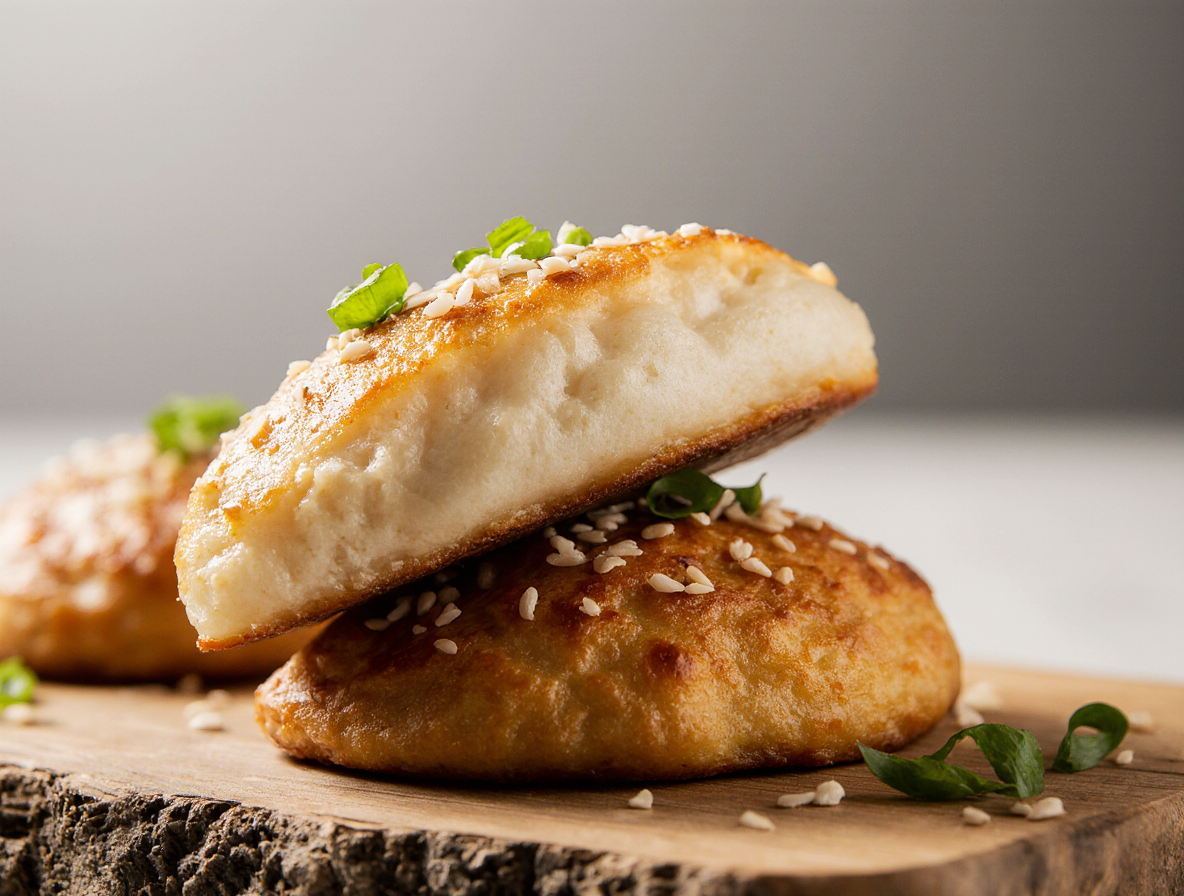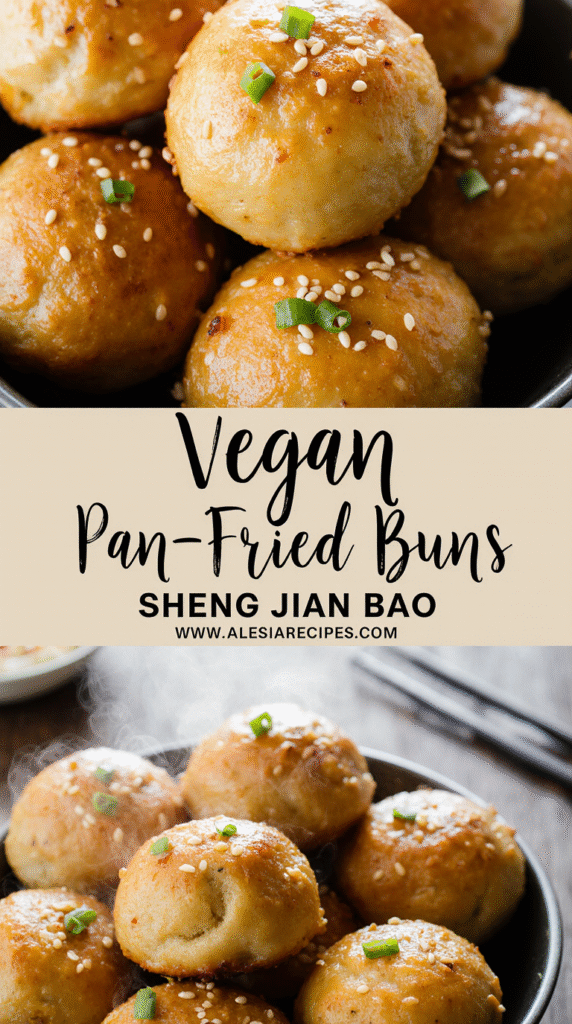How to Make Pan Fried Bao: Authentic Vegan Sheng Jian Bao Recipe
Did you know that a single pan fried bao recipe can yield up to 28 delicious pieces?
These crispy-bottomed buns, also known as sheng jian bao, are a Shanghai classic that translates to “raw fried buns” because they’re fried without any pre-cooking. Although similar to xiao long bao (soup dumplings), sheng jian bao has a partially leavened dough that creates a wonderfully soft consistency inside while maintaining that signature crispy bottom. What makes our vegan bao recipe special is the plant-based filling that doesn’t compromise on protein – for instance, using alternatives like OmniPork Ground provides a whopping 11 grams of protein per serving.
Creating these vegan bao buns at home might seem challenging, but we’ve broken down the process into manageable steps. Each bun uses approximately 18-19g of dough paired with 18-20g of filling, resulting in perfectly proportioned dumplings. Furthermore, unlike traditional gyoza, the sheng jian bao recipe incorporates yeast in the dough, making it fluffier and less chewy.
In this guide, we’ll walk you through every step of making authentic vegan sheng jian bao – from preparing jellied soup stock to mastering the pan-frying and steaming technique that gives these buns their distinctive texture. Let’s get cooking!
Prepare the Jellied Soup Stock
The magic of pan fried bao lies in its burst of savory soup when bitten into – a culinary feat achieved through a special jellied stock. Let’s explore how to create this essential component for our vegan sheng jian bao recipe.
Why jellied stock is essential for sheng jian bao
The jellied stock serves as the secret behind what makes sheng jian bao distinctively juicy. When cold, this stock remains solid, allowing it to be incorporated into the filling. Subsequently, once steamed, the jelly melts into a flavorful soup trapped inside the dumpling. This transformation creates that memorable burst of flavor when you bite into the bao – similar to the experience of eating soup dumplings, yet with the added textural contrast of the pan-fried bottom.
How to make vegan stock with agar
Traditional recipes use gelatin from animal sources, primarily from chicken wings, pork bones, or trotters. However, our vegan version achieves the same effect using agar agar:
- Prepare a flavorful base by combining:
- 1½ cups vegetable broth
- 1 teaspoon agar powder
- For enhanced umami flavor, consider adding:
- Kombu dashi and shiitake mushroom soaking water
- A splash of soy sauce (approximately 1 tablespoon)
- 2 tablespoons Shaoxing wine
- Mushroom seasoning for extra depth
Bring the mixture to a boil over medium-high heat. Reduce to a simmer, whisking constantly for about 3-4 minutes until the agar is completely dissolved. Pour into a shallow dish to maximize surface area for quicker setting.
Tips for setting and storing the jelly
Refrigerate the mixture for at least 2-3 hours, though overnight is preferable for complete setting. Once set, dice the jelly into small ½-inch cubes. These cubes will be folded into your filling mixture later.
Since agar melts more readily than animal-based gelatin when exposed to heat, keep these practical tips in mind:
- Store half the filling in the refrigerator while working with the other half
- Alternatively, place your bowl of filling over ice water to maintain the jelly’s solid state
- The prepared jelly can be made 1-2 days in advance and stored covered in the refrigerator
Remember that the agar jelly is the key to achieving that satisfying soupy interior in your vegan bao buns without compromising on authentic texture or flavor.
Make the Vegan Filling
Creating a flavorful filling forms the heart of any successful pan fried bao recipe. The right combination of proteins, aromatics, and seasonings will determine the ultimate taste of your sheng jian bao.
Choosing the right plant-based protein
First and foremost, select a protein with the right texture and absorbency. Several options work exceptionally well:
- Wheat gluten and dried bean curd sticks – A powerful combination that creates a meaty texture when properly hydrated
- TVP (textured vegetable protein) – Offers a convincing “pork-like” texture and readily absorbs flavors
- Soy curls – Made from whole non-GMO soybeans, these provide excellent texture while being minimally processed
- Mushrooms – King oyster, shiitake, or portobello varieties offer natural umami and meaty texture
Flavoring with aromatics and sauces
Next, create depth by combining classic Chinese aromatics and sauces:
- Base aromatics: Finely chopped scallions, minced garlic, and grated ginger form the foundation
- Primary seasonings: Shaoxing wine, soy sauce (both light and dark), and hoisin sauce
- Additional flavor enhancers: Sesame oil, white pepper, five-spice powder, and a touch of sugar
For optimal results, stir the ingredients in one direction to thoroughly integrate the flavors and create a cohesive texture. Consider marinading your protein mixture for at least 15 minutes in the refrigerator before using.
Folding in the jellied stock cubes
Finally, incorporate the jellied stock prepared earlier. Cut the jellied stock into small ¼-inch cubes. Gently fold these cubes into your seasoned protein mixture just before assembly. This careful folding prevents the jelly from melting prematurely while ensuring even distribution throughout the filling.
To maintain the integrity of your jellied stock during assembly:
- Work with half the filling at a time, keeping the remainder refrigerated
- Alternatively, place your mixing bowl over ice water to keep everything cool
The total filling weight should be approximately 562g, yielding enough for a complete batch of vegan sheng jian bao.
Knead and Rest the Dough
The foundation of perfect pan fried bao lies in its dough – properly kneaded and rested to achieve that ideal balance between fluffiness and structure.
Ingredients and mixing method
For authentic sheng jian bao dough, I combine all-purpose flour with a touch of cornstarch – roughly a 90:10 ratio by weight – which yields a softer texture. Additionally, I add instant yeast, baking powder, sugar, and a pinch of salt. For liquids, either lukewarm water or milk works well, with milk producing slightly softer buns.
To mix, I first combine all dry ingredients in a large bowl. Next, I gradually add the lukewarm liquid (95°F-115°F) while stirring continuously. Once a shaggy dough forms, I knead until everything comes together into a cohesive ball.
How long to knead and rest
Kneading develops the gluten structure crucial for pan fried bao. Using a stand mixer with dough hook attachment requires about 8-10 minutes, whereas hand-kneading takes approximately 15 minutes. The dough is ready when it feels smooth “like a baby’s butt” and bounces back slightly when pressed.
After initial kneading, I cover the dough and let it rest for 10 minutes. This short rest allows the gluten to relax. Consequently, I knead again briefly (1-2 minutes) before the main proofing period, which ranges from 30 minutes to 1.5 hours depending on room temperature.
Signs of a well-proofed dough
A properly proofed dough will have increased in size by 50-100% and feel significantly lighter when lifted. Moreover, the finger test provides reliable confirmation: gently press the dough with your finger – if the indentation remains briefly then slowly springs back, it’s perfectly proofed. If it springs back immediately, it needs more time; if it never rebounds, it’s over-proofed.
Assemble and Cook the Bao Buns
Now comes the moment of truth – transforming your carefully prepared ingredients into delicious pan fried bao. The assembly and cooking stages demand precision but yield remarkable results.
Rolling and pleating the wrappers
After dividing your rested dough into equal portions (about 36g each), flatten each piece with your palm. Work with one dough ball at a time, keeping others covered with a damp cloth to prevent drying. Roll each piece into a 3-3.5 inch circular wrapper, ensuring the edges remain thinner than the center. This thickness distribution enables easier pleating.
Place approximately 1 tablespoon of filling in the center of each wrapper. Hold the wrapper in your non-dominant hand, using your thumb to gently press down on the filling. With your dominant hand, create pleats by pinching and folding the dough inward in one direction until sealed. The final twist at the top creates that distinctive swirled appearance.
Pan-frying and steaming technique
Heat a non-stick pan over medium heat with enough oil to coat the bottom. Place the buns in the pan slightly apart, either pleated-side up or down. Initially pan-fry until the bottoms turn golden brown (about 2-3 minutes).
Pour approximately ¼-½ cup of water into the pan—enough to cover the buns halfway up. Immediately cover with a lid. Steam for 8-10 minutes until the water evaporates completely. Remove the lid, allowing any remaining water to evaporate, plus an additional 2-3 minutes to re-crisp the bottoms.
How to avoid bursting and soggy bottoms
Prevent bursting by properly sealing your buns—focus especially on pinching the top closure tightly. Never overfill; 1-2 teaspoons of filling is sufficient. Remove air bubbles by folding the dough twice before rolling into wrappers.
To avoid sogginess, always salt and squeeze excess moisture from cabbage ingredients. Additionally, maintain adequate spacing between buns during cooking as they expand considerably. Rest the buns briefly (10 minutes) after pleating but before cooking.
Conclusion
Making vegan sheng jian bao at home certainly requires attention to detail, but the results are undoubtedly worth the effort. After following this guide, you’ll have mastered the art of creating these delicious pan-fried buns with their signature crispy bottoms and juicy interiors.
First and foremost, remember that the jellied stock is what sets these buns apart from other dumplings. By using agar instead of animal-based gelatin, we’ve maintained the authentic soupy experience while keeping the recipe entirely plant-based. Additionally, selecting the right protein alternatives such as wheat gluten, TVP, or mushrooms ensures your filling has that satisfying texture and flavor profile.
The dough, meanwhile, requires patience. Though it might seem challenging at first, with practice you’ll recognize when it reaches that perfect baby-soft texture and optimal proofing stage. Furthermore, the pleating technique becomes easier with each bun you make – soon you’ll be creating those beautiful swirled tops without a second thought.
Most importantly, the cooking method combines both frying and steaming, creating that magical textural contrast between the crispy bottom and fluffy top. Because of this unique cooking style, these buns deliver an experience unlike any other dumpling variety.
I hope this recipe inspires you to bring a taste of Shanghai street food into your kitchen. Whether you’re cooking for yourself or sharing with friends and family, these vegan sheng jian bao will surely impress. Above all, enjoy the process of creating something both traditional and innovative – a plant-based version of a beloved classic that sacrifices nothing in flavor or texture. Happy cooking!
FAQs
Q1. What makes sheng jian bao different from other dumplings? Sheng jian bao are unique for their partially leavened dough and cooking method that combines pan-frying and steaming. This results in a crispy bottom and fluffy top, with a burst of savory soup inside when bitten.
Q2. How can I make vegan sheng jian bao filling? For a vegan filling, use plant-based proteins like wheat gluten, TVP, or mushrooms. Season with aromatics like scallions, garlic, and ginger, and add sauces such as soy sauce and hoisin. Incorporate small cubes of agar-based jellied stock for the signature soupy interior.
Q3. What’s the secret to getting a juicy interior in vegan bao? The key is using jellied stock made with agar agar. This vegan alternative to gelatin melts when heated, creating the burst of soup inside the bun. Fold small cubes of this jelly into your filling mixture just before assembling the bao.
Q4. How do I achieve the perfect dough for pan fried bao? Combine all-purpose flour with a touch of cornstarch, instant yeast, baking powder, sugar, and salt. Knead thoroughly until smooth, then allow to rest and proof. The dough is ready when it has increased in size by 50-100% and passes the finger test.
Q5. What’s the best way to cook sheng jian bao? Start by pan-frying the buns until golden brown on the bottom. Then add water to the pan, cover, and steam for 8-10 minutes. Finally, remove the lid and let any remaining water evaporate, cooking for an additional 2-3 minutes to re-crisp the bottoms.


